The section contains one question. Each question contains statements given in two columns which have to be matched . The statements in Column I are labelled A, B, C and D , while the statements in Column II are labelled p,q, r, s and t. Any given statement in Column I can have correct matching with ONE OR MORE statements (s) in Column II . The appropriate bubbles corresponding to the answers to these questions have to be darkened as illustrated in the following example:
If the correct matches are A-p, s and t, B-q and r, C-p and q, and D-s and t, then the correct darkening of bubbles will look like the following .

Match the following :
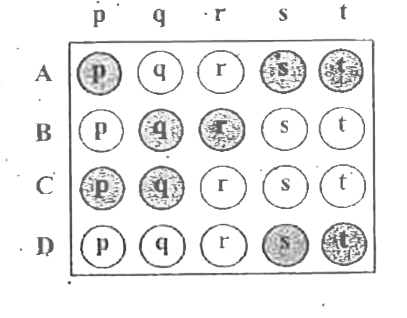
The correct Answer is:A→(r,s),B→(q,t),C→(p)D→(s,t)
(A) Na2CO3+NaHCO3
Using phenolphthalein indicator .
eq of Na2CO3 will react.
∴1st titre value
Na2CO3+HCl→NaHCO3+NaCl
∴1st titre value = eq of Na2CO3
Using methyl orange indicator :
eq of NaHCO3 produced from Na2CO3 & eq of NaHCO3 present will react :
NaHCO3+HCl→NaCl+H2O+CO2
∴2nd titre value = eq of Na2CO3+ eq of NaHCO3 .
A→r,s
(B) Na2CO3+NaOH
Using phenolphthalein indicator :
Na2CO3+HCl→NaHCO3+NaCl
NaOH+HCl→NaCl+H2O
∴1st titre value = eq of Na2CO3+ eq of NaOH .
Using methyl orange indicator :
NaHCO3+HCl→NaCl+H2O+CO2
(produced from Na2CO3)
2nd titre value = eq of Na2CO3
B→q,t
(C ) Na2C2O4+H2C2O4
Using NaOH & phenolphthalein indicator :
H2C2O4+NaOH→Na2C2O4+H2O
∴1st titre value of NaOH = eq. of H2C2O4
Using KMnO4 in acidic medium :
Using KMnO4 in acidic medium :
KMnO4+Na2C2O4+H+→CO2+Mn2++H2O+Na+
2nd titre value will give the eq of total Na2C2O4&H2C2O4 but in different n-factor value .
The estimation of Na2C2O4 can be done by the difference in moles of total Na2C2O4+H2C2O4 in 2nd titration & moles of H2C2O4 in 1st titration .
But difference in 1st&2nd titre value will not give the estimation of 1st constituent.
C→P
(D) H2CO3+NaHCO3
Using NaOH & methyl orange indicator :
H2CO3+NaOH→NaHCO3+H2O
1st titre value will give the estimation of 1st constituent.
Using NaOH & phenolphthalein indicator :
NaHCO3+NaOH→Na2CO3+H2O
↑
(NaHCO3 present + NaHCO3 preduced from H2CO3)
Difference in 2nd&1st titre value will give the estimation of 2nd constituent .
D→s,t
Topper's Solved these Questions
- STOICHIOMETRY AND BALANCING REDOX REACTION BOOK - FIITJEECHAPTER - STOICHIOMETRY AND BALANCING REDOX REACTION EXERCISE - Exercise 1.
2 Videos
- STOICHIOMETRY AND BALANCING REDOX REACTION BOOK - FIITJEECHAPTER - STOICHIOMETRY AND BALANCING REDOX REACTION EXERCISE - Exercise 2.
1 Videos
- STOICHIOMETRY AND BALANCING REDOX REACTION BOOK - FIITJEECHAPTER - STOICHIOMETRY AND BALANCING REDOX REACTION EXERCISE - SINGLE INTEGER TYPE QUESTIONS
2 Videos
- SOLID STATEBOOK - FIITJEECHAPTER - SOLID STATEEXERCISE - (SINGLE INTEGER ANSWER TYPE QUESTION)
5 Videos
- TEST PAPERSBOOK - FIITJEECHAPTER - TEST PAPERSEXERCISE - CHEMISTRY
747 Videos
Similar Questions
Calculate mass of sodium which contains same number of atoms as are present in 4g of calcium (Atomic weight Na=23, atomic weight Ca=40)
View Solution1 g mixture of cuprous oxide and cupric oxide was quantitatively reduced to 0.839 g of metallic copper. What was the weight of cupric oxide in the original sample ?
(Cu=63.5,O=16).
View Solution2 mole of Fe2C2O4 is oxidized by x mole of Cr2O2−7 in acidic medium , x is
View SolutionIn a cubic unit cell atoms 'A' occupies the corners and centre, atoms 'B' occupies the face centres, and atoms 'C' occupies the edge centres. If all the atoms on one of the planes which is bisecting the unit cell is to two equal halves, are removed. Calculate the total number of atoms (X), present in the unit cell. What is the value of (X/4) ? (Given that, the plane is not a diagonal plane)
View SolutionFor a 3s-orbital
Φ(3s)=1a√3(1a0)3/2(6−6σ+σ2)∈−σ/2
where σ=2rZ3aσ
What is the maximum radial distance of node from nucleus?
View SolutionThis section contains 2 questions. Each question contains statement given in two columns which have to be matched. Statements (a, b, c and d) in Column-I have to be matched with statement (p, q, r and s) in Column-II. The answers to these questions have to be appropriately bubbled as illustrated in the following examples: If the correct matches are (a-p, s), (c-p, q) and (d-s), then correct bubbled 4 xx 4 matrix should be as follows: Match the Column-I with Column -II
View SolutionThis section contains 2 questions. Each question contains statement given in two columns which have to be matched. Statements (a, b, c and d) in Column-I have to be matched with statement (p, q, r and s) in Column-II. The answers to these questions have to be appropriately bubbled as illustrated in the following examples: If the correct matches are (a-p, s), (c-p, q) and (d-s), then correct bubbled 4 xx 4 matrix should be as follows: Match the Column -I with Column -II
View SolutionHere each question contains statements given in two column which have to be matched. Statements in column I are labelled as A,B ,C and D where as the statements in column II are labelled p,q,r and s. the answer to these question are to be appropriately bubbled as illustrated in the following example.
If the correct matches should like the following
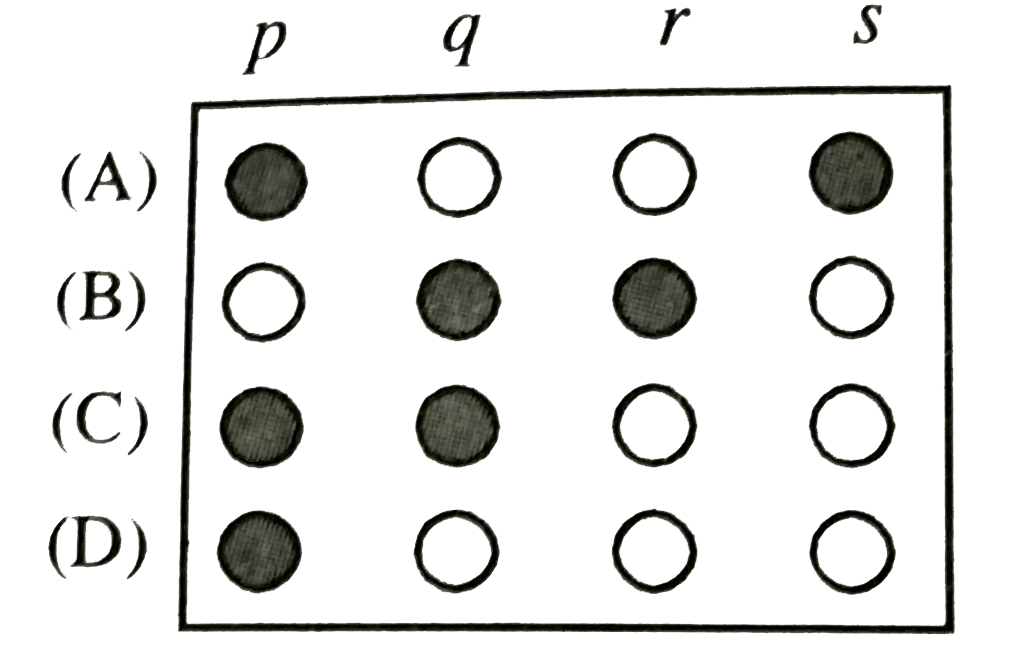
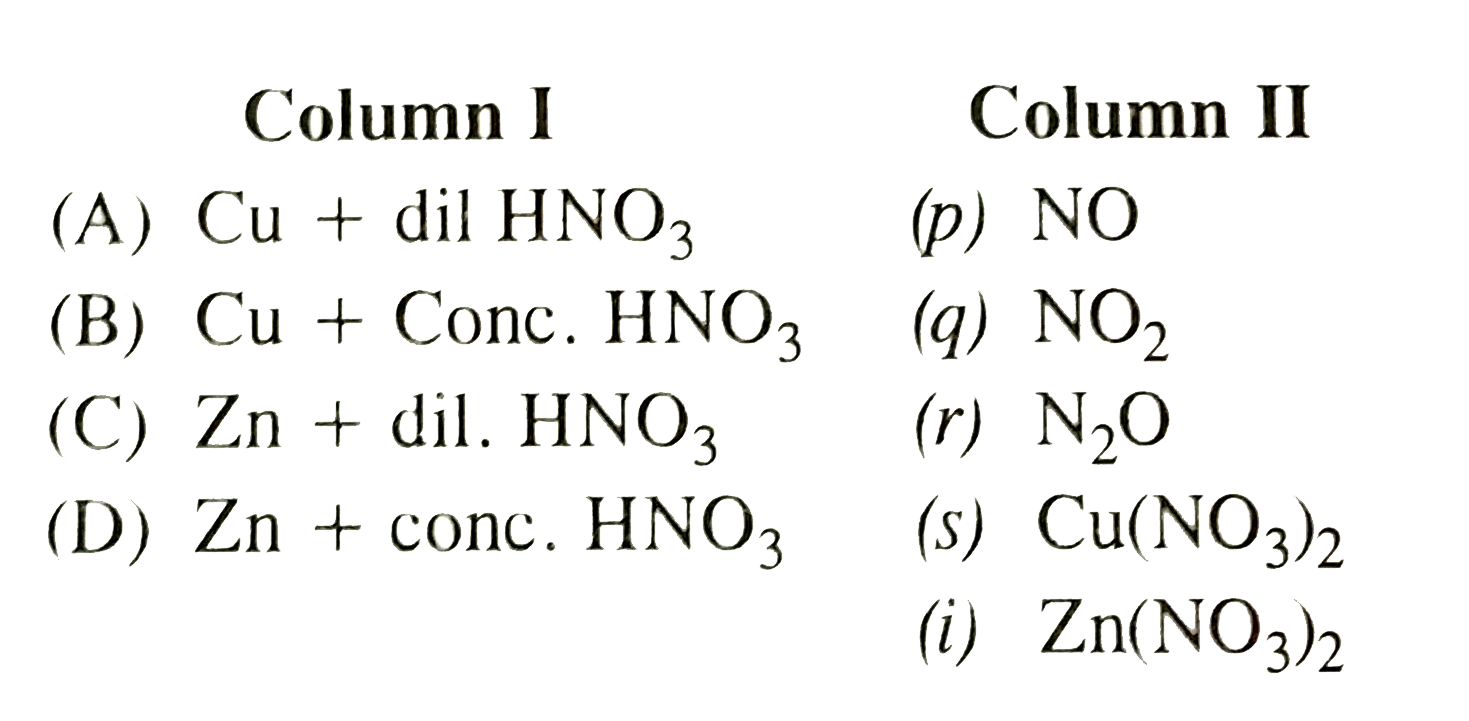
View SolutionHere each question contains statements given in two column which have to be matched. Statements in column I are labelled as A,B ,C and D where as the statements in column II are labelled p,q,r and s. the answer to these question are to be appropriately bubbled as illustrated in the following example. If the correct matches should like the following
View SolutionThis section contains 3 questions. Each question contains statement given in two columns which have to be matched. Statement (a, b, c and d) in Column-I have to be matched with statement (p, q, r and s) in Column-II. The answers to these questions have to be appropriately bubbled as illustrated in the following examples :
If the correct matches are (a-p, s), (b-q, r), (c-p, q) and (d-s), then correct bubbled 4×4 matrix should be as follows:
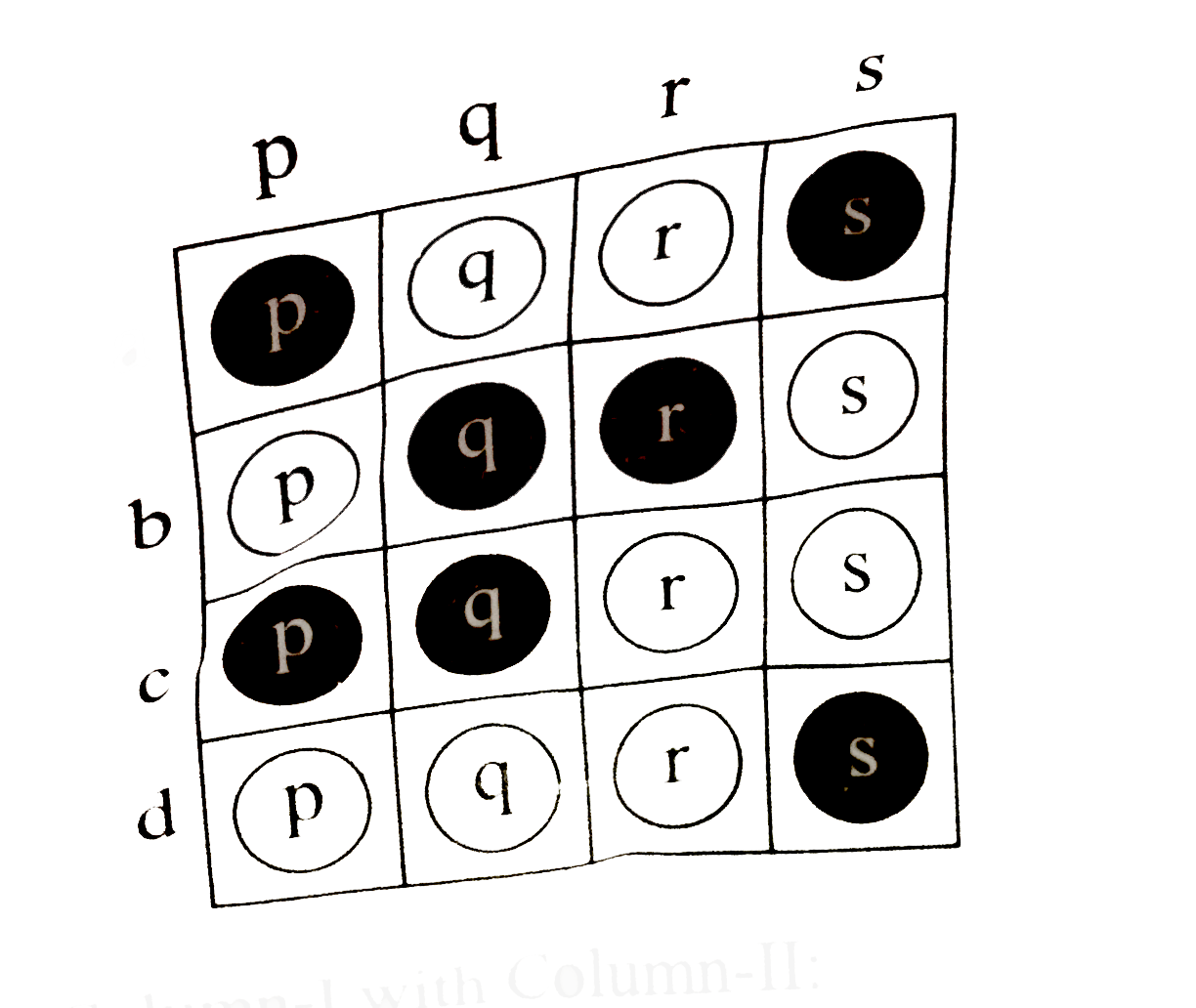
Match the column-I with Column-II :

View SolutionThis section contains 3 questions. Each question contains statement given in two columns which have to be matched. Statement (a, b, c and d) in Column-I have to be matched with statement (p, q, r and s) in Column-II. The answers to these questions have to be appropriately bubbled as illustrated in the following examples : If the correct matches are (a-p, s), (b-q, r), (c-p, q) and (d-s), then correct bubbled 4 xx 4 matrix should be as follows: Match the column-I with Column-II :
View SolutionThis section contains 3 questions. Each question contains statement given in two columns which have to be matched. Statement (a, b, c and d) in Column-I have to be matched with statement (p, q, r and s) in Column-II. The answers to these questions have to be appropriately bubbled as illustrated in the following examples : If the correct matches are (a-p, s), (b-q, r), (c-p, q) and (d-s), then correct bubbled 4 xx 4 matrix should be as follows: Match the column-I with Column-II :
View SolutionEach question in this section contains statements given in two columns which have to be matched. Statements in Column I are labetted as A,B, C, and D where as statements in Column II are labelled (p), (q), (r) and (s).


View SolutionThis section contains 2 questions. Each questions contains statements given in two columns, which have to be matched. The statements in Column I are labelled A, B, C and D, while the statements in Column II are labelled p, q, r, s and t. Any given statement in Column I can have correct matching with one or more statement(s) in Column II. The appropriate bubbles corresponding to the answers to these questions have to be darkened as illustrated in the following example : If the correct matches are A – p, s and t, B – q and r , C – p and q, and D – s and t, then the correct darkening of bubbles will look like the following Column II gives certain systems undergoing a process. Column I suggests changes in some of the parameters related to the system. Match the statements in Column I to the appropriate process(es) from Column II.
View SolutionThe section contains one question. Each question contains statements given in two columns which have to be matched . The statements in Column I are labelled A, B, C and D , while the statements in Column II are labelled p,q, r, s and t. Any given statement in Column I can have correct matching with ONE OR MORE statements (s) in Column II . The appropriate bubbles corresponding to the answers to these questions have to be darkened as illustrated in the following example:
If the correct matches are A-p, s and t, B-q and r, C-p and q, and D-s and t, then the correct darkening of bubbles will look like the following .

Match the reactions in Column I with nature of the reactions/type of the products in Column II. Indicate your answer by darkening the appropriate bubbles of the 4×4 matrix given in the ORS.
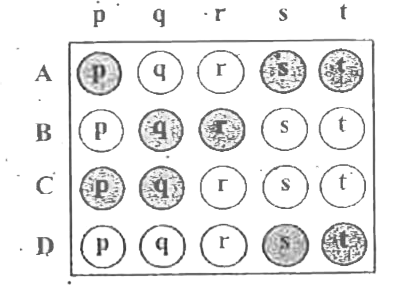
View Solution
